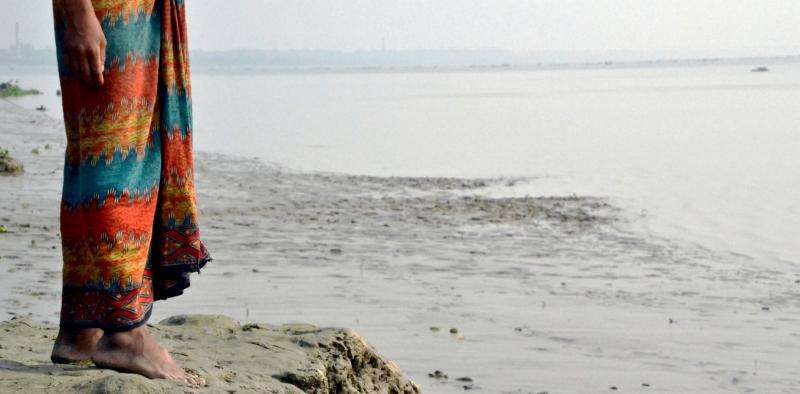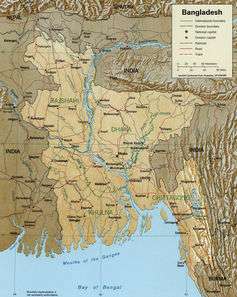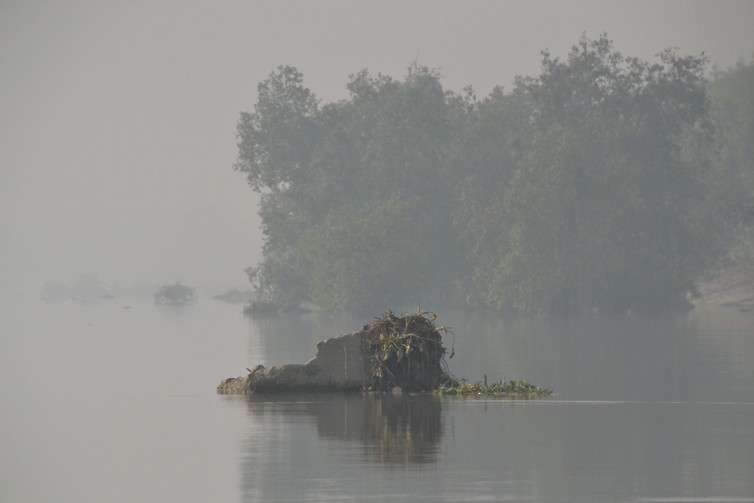Facing disasters: lessons from a Bangladeshi island

The death toll of Bangladesh's brutal monsoon season keeps growing. Authorities estimate that flooding has killed at least 120 people and affected some 5 million others since mid-July.
Disasters are a common phenomenon in Bangladesh, where about 220 reported events have occurred since 1980. The fertile country is situated on the Ganges–Brahmaputra delta and irrigated by the Meghna river, which enables it to sustain a dense population but also exposes it to floods, cyclones and other hazards.
These days, climate change is making such events both more frequent and more intense for Bangladeshis. Loss of life and property during the monsoon is a near-daily occurrence in most parts of the country.
In a global effort to reduce such hazards, the United Nations has crafted the Sendai Framework for Disaster Risk Reduction and Resilience, a 15-year plan to reduce the human, social and economic impacts of disasters.
Adopted in 2015, this international strategy aims to deepen the understanding of climate-vulnerable countries and help them prepare and prevent related losses.
However, as our research in Bangladesh reveals, critical knowledge gaps remain. Though functional early warnings systems to warn people about impending hazards, officials have found that they do not necessarily evacuate before danger arrives.

Our ongoing study, which began in 2013, offers some insight into their reasoning.
Life on Mazer Char
In examining evacuation behaviour and decision-making in the face of environmental shocks and stressors in Bangladesh, one realises how important it is for climate-change adaptation plans to include local inputs. Talking to the people impacted about their experiences and perceptions of disaster risks can uncover unexpected and critical insights.
One study site from our nationwide research painfully demonstrates this point: Mazer Char, a delta island in Pirojpur district, located about 330 kilometres southwest of Dhaka, Bangladesh's capital. When I arrived there with my research team, curious residents greeted us, asking why we had we chosen to study their island.
As we begin to explain our research subject, they instantly start connecting it with their own struggles.
On Mazer Char, the land is rich in vegetation and the waters are full of fish. Most residents of the forest-covered island, which is home to about 800 people spread across 180 households, make a living from fishing and livestock.

When disasters hit this low-lying island, they hit hard. "Four people died in this village during Sidr", a 2007 cyclone that killed about 10,000 people across the country, one woman tells me. At that moment, a man passes by, carrying wood for his kitchen stove. "He lost his wife", she whispers.
"I lost more than my wife", says the man, evidently overhearing the exchange. He invites us to his house later that day to tell us his story, which is captured in the video below.
Nurmia's story
When we get there, the man, whose name is Nurmia, is freshly showered, with combed hair and a crisp blue shirt. He has prepared for our visit.
We sit down on the bamboo carpet. "I was born about 70 years ago", he tells us, on the mainland, in a place called Ogolbadi. Nurmia left home after a dispute with his brothers over the family's land, so he crossed the river to Mazer Char, hoping to build a new life.
Nurmia spends most of his time fishing, though because his boat is currently broken, he hasn't been out on the water for a while.
"The wood here on the island is not very good, so I end up repairing it every year", he sighs, adding that in the meantime he has been net fishing from the shore, an interim solution to put food on the table.
Suddenly, Nurmia shifts position and starts recounting the November night when Cyclone Sidr struck the island.
Riding out the storm
Although the residents of Mazer Char were warned about the cyclone approaching, Nurmia did not evacuate, nor did many other islanders, who could not bear to leave their homes and belongings behind.
People face complex and careful considerations in deciding whether to stay or to go during a cyclone. Some may want to evacuate but lack the financial means to do so, or feel constrained to simply abandon everything they own.
That was the case with Nurmia's family, which at the time of the cyclone was doing quite well. They had even saved enough money to send their eldest son off to Saudi Arabia for work.

Sidr changed all of that. That night in 2007, the cyclone took nearly all of Nurmia's most valuable possessions, and claimed the life of his wife.
Nurmia is determined to learn from his mistakes. He explains to us how riding out a cyclone at home can be much more costly than dropping everything and evacuating to a shelter.
"We survived the cyclone once and this is what it taught us!", he concludes in ending his story.
Life and death decisions
For researchers, Nurmia's tale offers other lessons, too, which is that there is no right way to face a disaster. People dealing with environmental shocks in Bangladesh confront an impossible reality and a set of unthinkable choices.
Climate action strategies like the Sendai Framework are a crucial tool to support populations living under extremely vulnerable circumstances. Yet it is our assessment that for such policies to be effective, they would do well to pay closer attention to the differing approaches that people take to climatic risk.
Some people are simply more vulnerable to disasters than others. While certain families may be able to afford to leave everything behind, others' survival depends on their homes, livestock or property. To save their lives, they will put their lives in danger.
Provided by The Conversation
This article was originally published on The Conversation. Read the original article.![]()


















